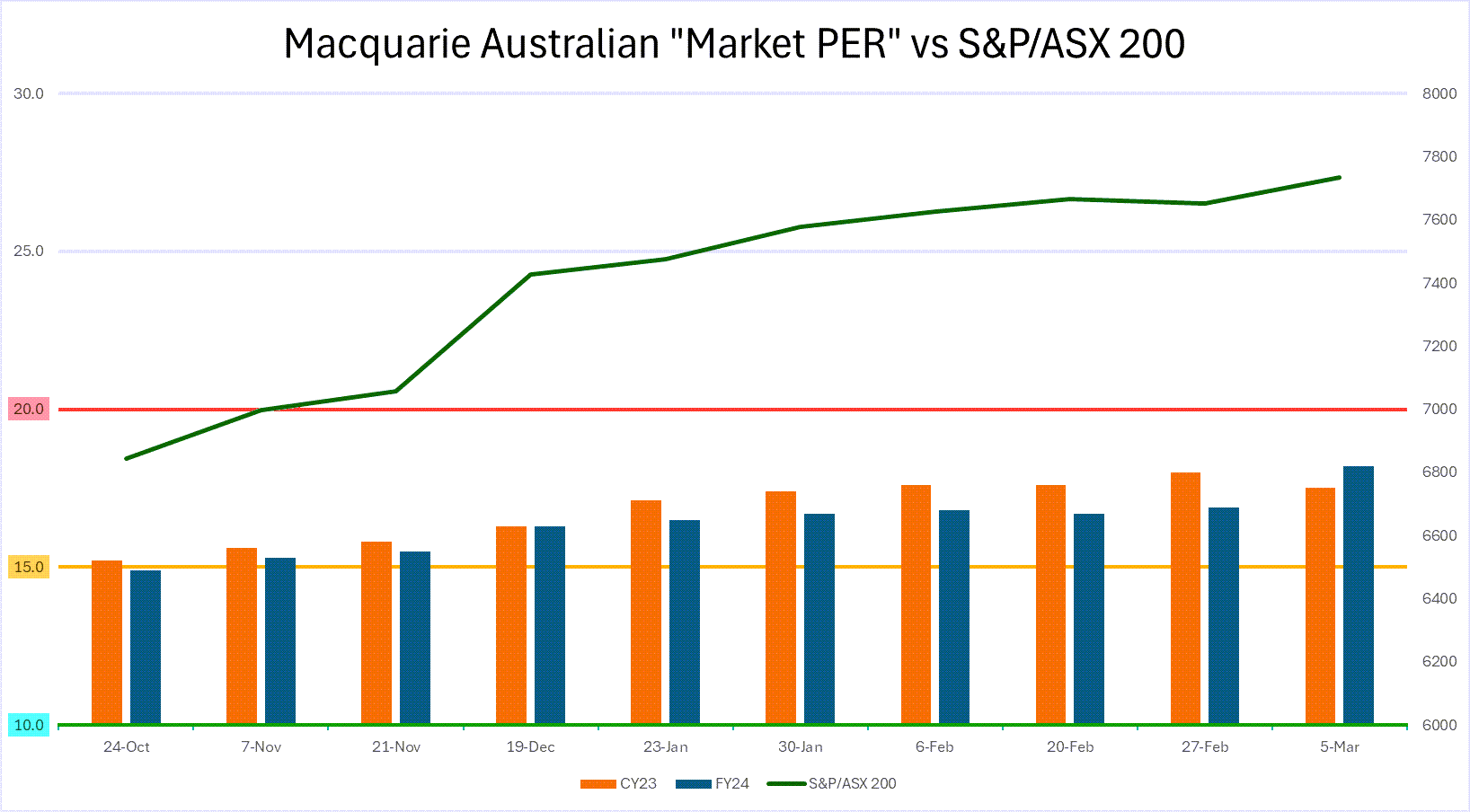The ASX 200 is at a record but are stocks cheap or expensive? Here’s the data
Humans are predisposed to assuming an item that has risen in price is naturally more expensive after the rise than before it. For example, if cauliflowers cost around $1.50 on the day before the world learned of the COVID-19 pandemic, one could argue that at $10, they are indeed “expensive” today!

I argue it’s different for stocks. One of the most essential lessons new investors must learn is that a change in a stock’s price doesn’t automatically equate to a change in its value.
There's the real world, then there's the investing world...
The cauliflower example demonstrates how different the real world is from the investing world. When a stock’s price goes up, it’s entirely possible it’s either worse, the same, or better value than before the rise. This is because a stock’s value is tied to its earnings potential.
There are several metrics stock analysts use to measure value. The most common is the PE Ratio, where PE stands for “price to earnings''. The equation for determining a stock’s PE Ratio is dividing its price by its earnings per share (EPS). Check out this article for a refresher on the PE Ratio and how to use it to better understand the value of stocks and stock indices.
In short, a higher PE Ratio is usually associated with more expensive stocks, and a lower PE Ratio is usually associated with less expensive stocks. There are also relative valuation considerations. Some stocks and sectors naturally tend to trade at a higher PE Ratio because they have higher earnings growth potential. It’s important to compare PE Ratios of stocks with similar characteristics.
PE Ratios can also help us understand the value of whole stock markets. Here, analysts consider the aggregate EPS of all stocks within a benchmark index, such as the S&P/ASX 200, and divide this value by the index’s price.
There are a few widely accepted guideposts for benchmark index valuations. Typically, stocks have tended to experience corrections when a benchmark stock index’s PE Ratio has climbed above 20. Also, stocks have often experienced rallies when a benchmark index’s PE Ratio has dipped below 10.
Given the above, stock analysts have come up with a few rules of thumb regarding market PE Ratios and valuations. A market PE Ratio greater than 20 is usually considered “expensive”, while one below 10 is considered “cheap”. It follows that a market PE Ratio around 15 is usually considered “fair value”.
Aussie stock market valuation nearing “expensive”
One of the key benchmark valuation guideposts is starting to emerge, and Aussie investors should note that it’s not ideal. A report released this week from Macquarie suggests the Australian stock market is edging closer to flashing an “expensive” reading.
Macquarie compiles regular data for the Australian stock market, typically publishing a market PE on both a forward and historical basis. The broker’s forward market PER is based on their EPS estimates for Australian stocks for the 2024 financial year, which ends on June 30 (FY24). Their historical market PER is based upon actual reported earnings of Australian companies for the half year ending December 31 2023 (CY23).
Note; professional investors prefer to use forward PE ratios rather than historical ones, but it's important to remember we are only looking at one broker’s estimate for FY24 here. Other brokers will have different views of the earnings potential of Australian stocks over this period. The benefit of including CY23 data in this discussion is that it provides a consistent basis upon which we can consider the Australian stock market’s valuation.

Remembering our stocks versus cauliflower analogy? The big question is whether the price increase in the index has been accompanied by corresponding earnings increases among its constituent stocks to maintain the benchmark’s PE Ratio. Macquarie’s data suggests this is not the case, on either a forward or historical basis.
Basically, Macquarie are saying they don’t think the Aussie market’s earnings are keeping up with recent price increases and this is potentially making Aussie stocks more expensive. This is put into greater context given the old “20 market PE Ratio is expensive” rule.
Be alert, not alarmed!
Macquarie only publishes data for its FY24 forecast. They may be predicting substantial growth in their market EPS forecast for FY25, which would cause their market PER for that year to be substantially lower than FY24’s 18.2. Remember, investors’ time horizons are much further out than June 30 this year, so FY25 and FY26 market PE Ratio estimates are likely more influential on views of current valuations.
This article first appeared on Market Index on Friday 8 March.
5 topics

